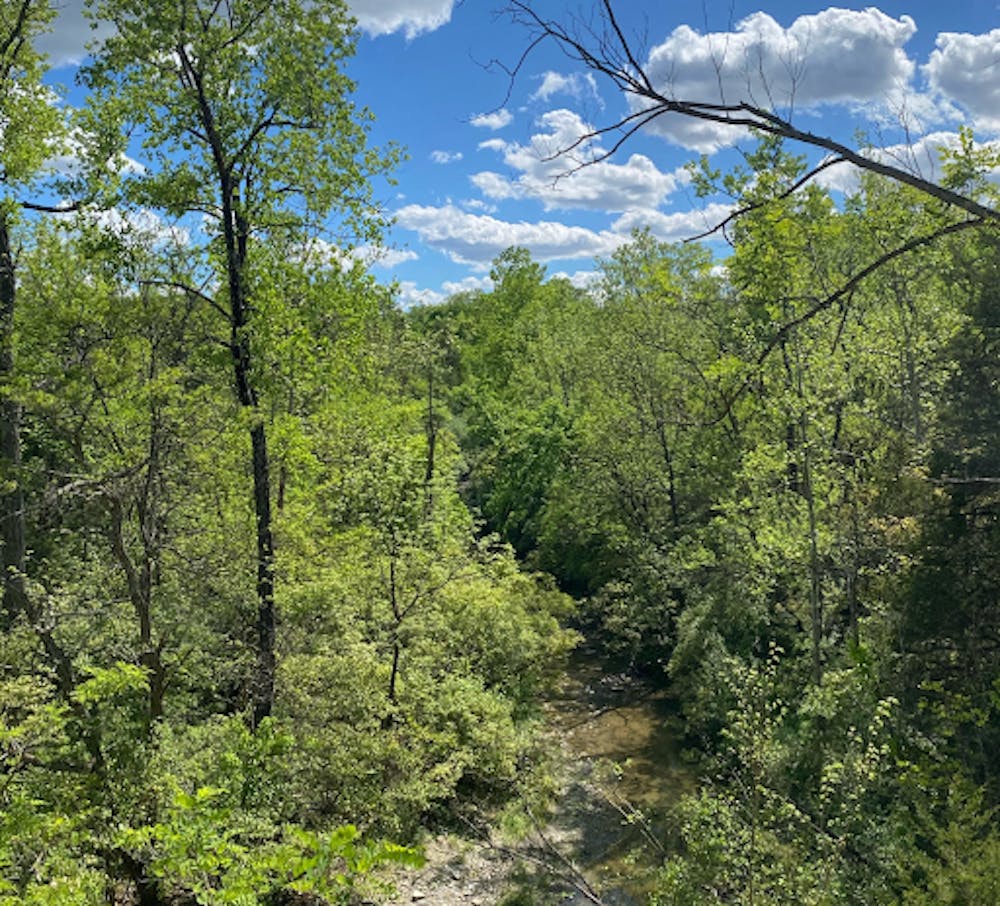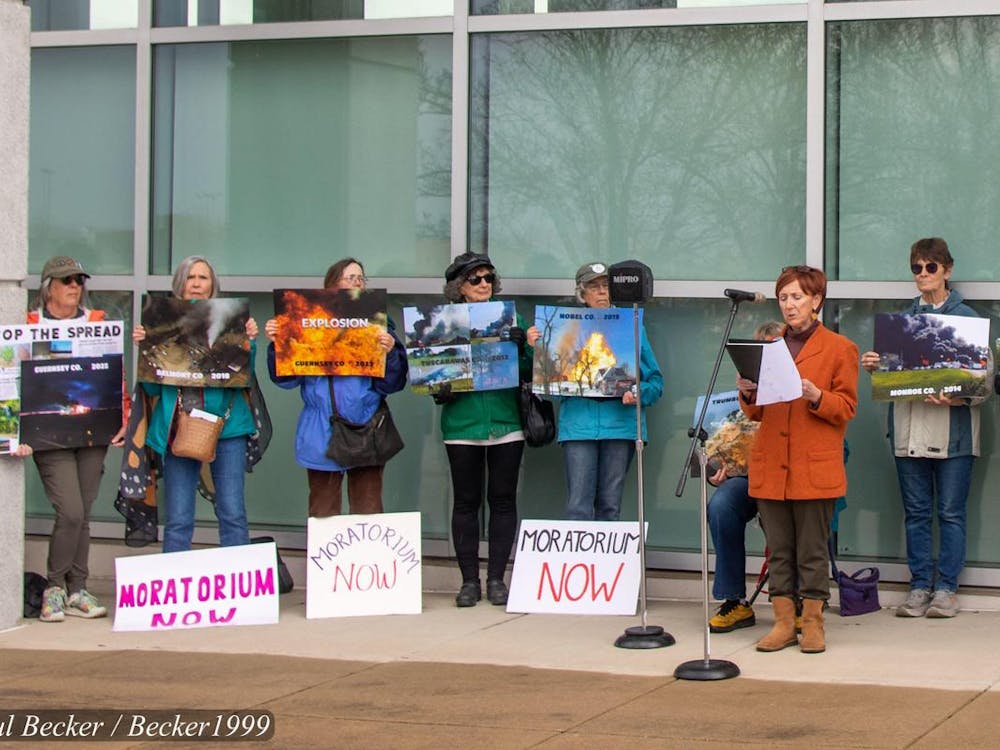There is so much more to Miami University than its red brick exterior — specifically, the hidden gems of its natural areas. After a long day of classes, you can satisfy your craving to get more in tune with nature by hiking, leisurely walking and more in these areas. From the wildflowers of Silvoor Biological Sanctuary to the swinging bridge along Bachelor Loop, there is an abundance of nature to explore.
If you’re thinking – “Where should I start?” – refer to the map displaying Miami’s trails which interconnect and contain plenty of natural areas. On these maps, users can pinpoint where each trail is located and what unique aspects they offer. For example, if you want to walk along a paved trail with historical significance and opportunities for birdwatching, the Bonham Dewitt trail is for you.
Olivia Herron, a Miami alumna and director of sustainability at Miami, has some great insights on where students should begin their explorations.
“Students should start exploring at the trailhead closest to their residence hall,” Herron said. “I think that this is a great way to create a routine around exploring the natural areas, especially if you don’t have a lot of time to go spend outside but still want to decompress after class.”
The trails certainly are close to students, sometimes right in the backyard of residence halls. Herron also elaborated on how accessible Miami’s natural areas are no matter where you’re located.
“When students hear that Miami has 17 miles of trails, they think that they’re going to have to get in a car and drive somewhere to access them,” Herron said. “But when they realize that they’re located so close to campus, I hope they take advantage of this really cool opportunity to go outside and explore.”
Upperclassmen at Miami have had time to explore Miami’s trails and truly take advantage of the benefits received from spending time outdoors. Katie Preston, a senior studying communication design, similarly reflected on how easy it was to be in nature just a few steps away from her dorm.
“My first year, I was in Collins Hall, and we were always traversing around the forested areas nearby,” Preston said. “It was nice to explore these areas since they’re kind of like those third places that you can go to and just sit without buying something or worrying about classes.”
Izzy Storey, a senior kinesiology major, said how accessible nature was from her dorm and how the beauty she appreciated didn’t necessarily have to be biological nature.
“The outdoor areas of Western campus are probably my favorite,” Storey said. “It’s beautiful, especially in the fall when the leaves change, and I think the bridges and architecture of the buildings on Western add to its beauty.”
According to Reena Murphy, a Miami alumna and Oxford’s sustainability coordinator, Oxford offers plenty of educational events for those trying to better understand the natural surroundings around them. One of these events, the annual Hike-a-Thon on Sept. 21 is meant to connect Miami and Oxford hikers at one event.
“The whole goal is to get people out on the trails while also giving community partners an opportunity to staff booths and inform people about what is happening in the larger community,” Murphy said.
Enjoy what you're reading?
Signup for our newsletter
Whether you’re an incoming first-year student at Miami or a graduate student, there are so many opportunities to connect with the natural areas in and around campus. Take advantage of these opportunities to develop your own “third space” and touch some grass outside of the pressures of class.




